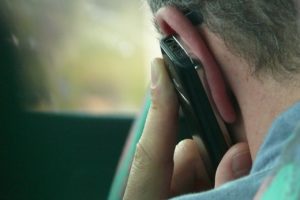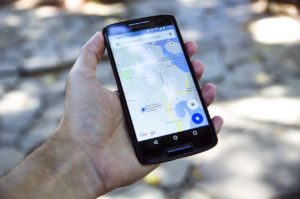Losing your smartphone can be a stressful experience. Fortunately, there’s plenty you can do to ensure that a missing phone doesn’t lead to even bigger problems. If you stay calm and act quickly, chances are good that you’ll either be able to recover your phone or at least ensure that your personal data and any other valuable information is protected. The following step-by-step guide can help you to figure out what you need to do in the event that you misplace your phone.
What to do first
 If you don’t know where your phone is, the first thing you should do is call yourself from an alternate phone or ask a friend to do so for you. Hopefully you’ll hear the phone ringing somewhere nearby and you can easily retrieve it. If a stranger happens to pick up your phone from wherever it was left, then calling your phone will allow you to make contact with the person and arrange for the phone to be returned. If there’s no phone available for you to use, websites such as wheresmycellphone.com allow you to call your phone for free via the Internet.
If you don’t know where your phone is, the first thing you should do is call yourself from an alternate phone or ask a friend to do so for you. Hopefully you’ll hear the phone ringing somewhere nearby and you can easily retrieve it. If a stranger happens to pick up your phone from wherever it was left, then calling your phone will allow you to make contact with the person and arrange for the phone to be returned. If there’s no phone available for you to use, websites such as wheresmycellphone.com allow you to call your phone for free via the Internet.
If you can’t locate your phone right away
If calling your phone doesn’t help you to find it immediately, there’s another important call you need to make right away. Contact your service provider to notify them that your phone is missing, and ask for your service to be suspended. This will prevent someone who may have stolen your phone from racking up fraudulent charges on your account. Some providers may also offer a GPS location service, which you can use to help track down your phone’s location.
More steps you can take to find your phone
Use location apps or services—Many smartphones today come with built-in phone finding features. With an Android device, for example, you can sign into your Google account on Chrome and type “find my phone” into the search bar. A window with the phone’s last location will appear in the search results, along with options to call the phone or lock it down. Apple offers a similar “Find my iPhone” app on all of its iOS devices, as do other major brands including Samsung and Windows smartphones.
Retrace your steps—Mentally or physically, go back over what you did and where you went before you realized that your phone was missing. If you left your phone inside a store or restaurant, the manager may have found it and set it aside. If you left your phone on public transit or in a taxi (two of the places where smartphones are most commonly misplaced), call the taxi company or transit authority to find out if they have any information.
Contact local law enforcement—It’s always possible that someone found your phone and turned it in to the police, so contacting your local law enforcement office is worth a try. If they do have it, you’ll likely need to confirm the serial number and model before it can be returned to you.
If you think your phone is gone for good
 Wipe your phone—If you have an automatic device wiping feature enabled, now is the time to use it. Most phones allow you to remotely lock down your phone and wipe it clean of critical information. This is an essential step to help prevent abuse of your personal data. You should also change the passwords for any accounts that you used your phone to access, including social media accounts, cloud storage accounts, banking apps, and online stores. While a remote wipe of your phone should cut off access to those accounts, changing your passwords is recommended as an additional security step.
Wipe your phone—If you have an automatic device wiping feature enabled, now is the time to use it. Most phones allow you to remotely lock down your phone and wipe it clean of critical information. This is an essential step to help prevent abuse of your personal data. You should also change the passwords for any accounts that you used your phone to access, including social media accounts, cloud storage accounts, banking apps, and online stores. While a remote wipe of your phone should cut off access to those accounts, changing your passwords is recommended as an additional security step.
Contact your carrier again—Even if you’ve already notified your service provider that your phone is missing, you should contact them again and report the phone as lost or stolen. Your carrier may be able to blacklist the phone, which will limit the chances of it being used or resold.
Monitor your accounts—For a few months after you lose your phone, it’s a good idea to keep a close eye on your bank accounts and other confidential online accounts, which may have been compromised. If you notice any unusual or unauthorized activity, notify your account provider at once.
If you find your phone
Factory reset your phone—Even if your phone is returned to you, it’s always possible that someone tampered with it while it was out of your possession. In order to be on the safe side, you should back up your photos, contacts, and other essential information to another device, then wipe your phone clean and reset the system. This will get rid of any harmful apps or other nasty surprises that may have been planted. Likewise, your passwords may have been compromised while your phone was missing, so you should be sure to reset your lock screen password and passwords to any confidential accounts (it’s a good practice to do this on a regular basis in any case).
Prepare for the next time—If you didn’t have any tools installed to help find your phone when it went missing, don’t make that mistake again. Now that you’ve got your phone back, be sure to secure it, and put features in place that will help you to find or lock your phone should you lose it again.

